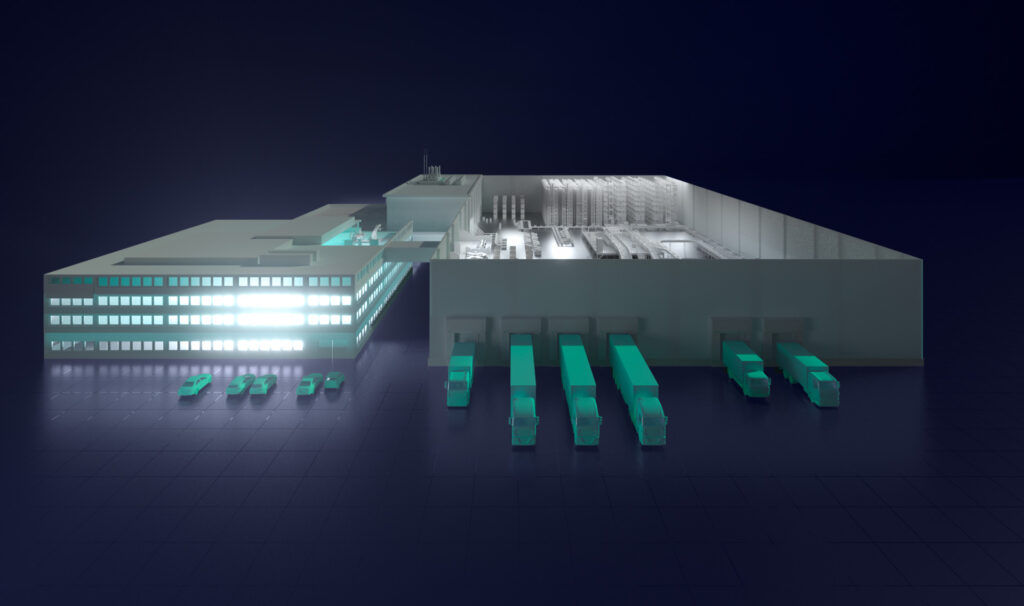SPONSORED CONTENT PRESENTED BY SIEMENS INDUSTRY, INC

Technology and innovation have been at the forefront of transforming industries through digitalization. Let’s explore the digital transformation journey of intralogistics, examining the technologies involved, the impact on supply chain management, and the implications for businesses globally.
Background of Digital Transformation
The digital transformation era gained momentum in the 21st century. Companies are recognizing the potential of digital technologies in enhancing efficiency, reducing costs, and improving overall performance in various sectors. Intralogistics emerged as a critical focus area, given its pivotal role in supply chain dynamics.
Technologies Driving Transformation
Industrial Internet of Things (IIoT) Integration:
IIoT is leveraged to connect various elements within the supply chain, from warehouse equipment to transportation systems. This connectivity enables real-time monitoring, data collection, and analysis, leading to improved decision-making and operational efficiency.
Automation and Robotics:
Automation plays a central role in digital transformation. The deployment of robotics in warehouses and distribution centers enhances speed and accuracy in tasks such as picking, packing, and sorting.
Artificial Intelligence (AI) for Predictive Analytics:
AI algorithms analyze vast amounts of data generated by intralogistics operations. Predictive analytics helps in anticipating demand, identifying potential bottlenecks, and optimizing inventory levels. This proactive approach minimizes disruptions and enhances overall supply chain resilience.
Digital Twins:
The concept of digital twins creates virtual replicas of physical assets and processes. In the intralogistics industry, digital twins enable a comprehensive understanding of warehouse operations, facilitating continuous optimization and simulation of various scenarios for improved decision-making.
Impact on Supply Chain Management:
Enhanced Efficiency and Speed:
Digital transformation of the intralogistics industry has resulted in a more efficient and faster supply chain. Automation and real-time data enable much faster response times to market demands, reducing lead times, and enhancing overall operational agility.
Cost Reduction and Resource Optimization:
Through the utilization of advanced technologies, significant cost reductions can be achieved in intralogistics. Automation minimizes labor costs, while predictive analytics and digital twins optimize resource allocation, reducing waste and enhancing cost-effectiveness.
Improved Visibility and Transparency:
Digitalization has brought unprecedented visibility and transparency to supply chain processes. Solutions can provide real-time insights into inventory levels, order status, and transportation movements, enabling better decision-making and customer service.
Global Implications for Businesses:
Digital transformation serves as a blueprint for companies worldwide seeking to modernize their supply chain operations. The lessons learned can guide organizations in adopting digital technologies to stay competitive in an ever-evolving global market.
Challenges and Future Considerations:
While remarkable strides have been made, challenges remain, including cybersecurity concerns, integration complexities, and the need for skilled workforce. In conclusion, lets discuss future considerations for Siemens and the broader industry as digital transformation continues to evolve.
Siemens stands as a testament to the power of technology in re-shaping industries. By embracing IIoT, automation, AI, and digital twins, Siemens has revolutionized supply chain management by setting new standards for efficiency, cost-efficiency, and agility. As businesses around the globe navigate their digital transformation, the Siemens journey provides valuable insights and inspiration for achieving success in the rapidly changing landscape of intralogistics and beyond. To learn more visit usa.siemens.com/intralogistics.
 MHI Solutions Improving Supply Chain Performance
MHI Solutions Improving Supply Chain Performance
